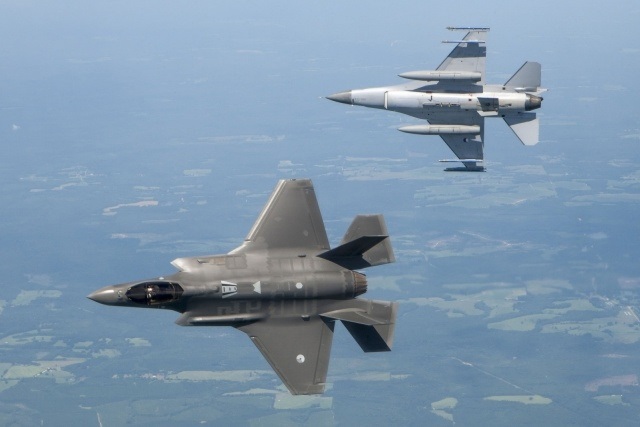Aircraft Selection to NATO F-35

The USA
had learnt a lesson from this F-16 story. This time, it was going to
launch the F-35 production by establishing
a partnership in advance. In other words,
it would not invest all the capital
itself, but those participating in the production would put capital.
Capital owners were divided
into 3 classes.
In the 1st class is the United Kingdom with $2.5 billion. This is about %10 of the entire cost.(The
cost now %71 above planning and
expected to reach %100),
In the 2nd class are
Italy with $1 billion and the
Netherlands with $800 million.
In the 3rd class are
Turkey with $195 million; Canada with $160 million; Australia with $144 million; Norway with $122 million and Denmark with
$110 million. Israel and Singapore will
participate as Security Cooperative
Participants (SCP) without investing any money.
Japan, on the
other hand, has announced that it will purchase the
entire assembly itself.
The decision is good, but the problems are
insurmountable.
This aircraft, which was planned to
replace the F-16, could not pass any trials. The
latest dogfight showed how incapable the F-35 was against
the F-16. Moreover, the F-16 had two additional under-wing fuel units, while the
F-35 was bare. Neither fuel units
nor weapons were loaded.
As the budget increased, the delivery dates
were pushed back. With its
different purpose models, it was as if it was moving
towards becoming separate aircraft. While the F-35A was produced according
to 9 G endurance, the F-35B was planned
to be produced as 4.5 G. When the F-35 failed
to pass the
tests after its first delivery
to the US Navy in 2009, it was decided that it would be better to use as an Unmanned
Aerial Vehicle with a redesign in 2014 and the work
started again.
Currently,
the countries ordering F-35s are Australia 72, United Kingdom 48, Israel 33, Netherlands 8, Italy 6, Turkey 6, Japan 5, Norway 4. Since they are still in the planning
phase, the US Army, Air Force and Navy have
not yet placed an order.
From 16 November 1996, when the partnership agreement was signed
to 2014, the programme has exceeded the budget by
$163 billion, but the fact that it is 7 years behind the
projected deadline is an indication that things are not going well at all.
In addition, the operating costs of the F-35 are %79 more expensive than the aircraft they plan to replace. Production costs are %68 higher than the others. The main issue is loss of visibility. The fact that it has less visibility than the planes they plan to replace in a bilateral war is a deficiency that makes it possible to hunt. Especially the engine change, which takes 52 hours, is very funny with the currently planned two-hour projection. For the F-16, the Joy-Stick was an innovation and something to get used to. Now a touch screen is being installed on the F-35. Of course, getting used to this in a fighter aircraft should be related to reaction time. Test pilots describe the touch screen as backward.
The
JY-26 Skywatch-U UHF 3-D long-range
surveillance radar system announced by China
in November 2014 has reduced
the stealth capability of this aircraft to zero.
It seems that, in the era of pilotless
warfare, building piloted fighter aircraft will only
make money for some people.
The real war is the
war that has been fought and
will always be fought in education.
www.servetbasol.com
081104